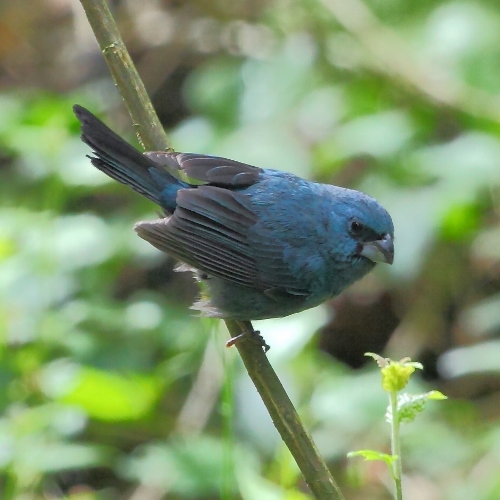Superregnum: Eukaryota
Regnum: Animalia
Subregnum: Eumetazoa
Cladus: Bilateria
Cladus: Nephrozoa
Superphylum: Deuterostomia
Phylum: Chordata
Subphylum: Vertebrata
Infraphylum: Gnathostomata
Megaclassis: Osteichthyes
Cladus: Sarcopterygii
Cladus: Rhipidistia
Cladus: Tetrapodomorpha
Cladus: Eotetrapodiformes
Cladus: Elpistostegalia
Superclassis: Tetrapoda
Cladus: Reptiliomorpha
Cladus: Amniota
Classis: Reptilia
Cladus: Eureptilia
Cladus: Romeriida
Subclassis: Diapsida
Cladus: Sauria
Infraclassis: Archosauromorpha
Cladus: Crurotarsi
Divisio: Archosauria
Cladus: Avemetatarsalia
Cladus: Ornithodira
Subtaxon: Dinosauromorpha
Cladus: Dinosauriformes
Cladus: Dracohors
Cladus: Dinosauria
Ordo: Saurischia
Cladus: Eusaurischia
Cladus: Theropoda
Cladus: Neotheropoda
Cladus: Averostra
Cladus: Tetanurae
Cladus: Avetheropoda
Cladus: Coelurosauria
Cladus: Tyrannoraptora
Cladus: Maniraptoromorpha
Cladus: Maniraptoriformes
Cladus: Maniraptora
Cladus: Pennaraptora
Cladus: Paraves
Cladus: Eumaniraptora
Cladus: Avialae
Infraclassis: Aves
Cladus: Euavialae
Cladus: Avebrevicauda
Cladus: Pygostylia
Cladus: Ornithothoraces
Cladus: Euornithes
Cladus: Ornithuromorpha
Cladus: Ornithurae
Cladus: Carinatae
Parvclassis: Neornithes
Cohors: Neognathae
Cladus: Neoaves
Cladus: Telluraves
Cladus: Australaves
Ordo: Passeriformes
Subordo: Passeri
Infraordo: Passerida
Superfamilia: Passeroidea
Familia: Cardinalidae
Genus: Cyanoloxia
Species: Cyanoloxia glaucocaerulea
Name
Cyanoloxia glaucocaerulea (Orbigny & Lafresnaye, 1837)
Synonyms
Passerina glaucocaerulea (Orbigny & Lafresnaye, 1837)
Vernacular names
English: Glaucous-blue Grosbeak
español: Reinamora chica
português: Azulinho
References
Magasin de Zoologie 7 cl.2 p.85
The glaucous-blue grosbeak (Cyanoloxia glaucocaerulea), also known as the indigo grosbeak, is a species of bird in the family Cardinalidae, the cardinals or cardinal grosbeaks. It is found in Brazil, Argentina, Paraguay, and Uruguay.[2]
Taxonomy and systematics
The glaucous-blue grosbeak is monotypic.
For much of its history, the glaucous-blue grosbeak was the only member of genus Cyanoloxia. Following a 2004 publication, the blue-black grosbeak (now Cyanoloxia cyanoides) and ultramarine grosbeak (now Cyanoloxia brissonii) were moved from genus Cyanocompsa. What is now Amazonian grosbeak (Cyanoloxia cyanoides) was later split from blue-black grosbeak.[2][3]
Description
The glaucous-blue grosbeak is approximately 14 cm (5.5 in) long. Three birds weighed from 16 to 19.5 g (0.56 to 0.69 oz). The male is generally dark sky blue that is lighter on the forehead and rump and is grayish on the lower belly. It has a small black "mask". The female is brown overall, warm and dark above and orange-tinged below. The immature is orange-brown that is darker on the back, and it has a hint of blue on the forehead and cheek.[4]
Distribution and habitat
The glaucous-blue grosbeak nests in northeastern Argentina, southeastern Brazil, and much of Uruguay. During the austral winter, some move into southeastern Paraguay and further north in Brazil. It inhabits low, somewhat dense, vegetation such as along forest edges, on river islands, in marshes, and in secondary forest. In elevation it ranges from near sea level to 1,700 m (5,600 ft) in Brazil.[4][2]
Behavior
Feeding
The glaucous-blue grosbeak is known to forage in pairs but other details and its diet have not been published.[4]
Breeding
The glaucous-blue grosbeak's breeding phenology has only been documented in Uruguay. There it nests from October to December. Two to four eggs are laid in a cup nest of twigs placed in dense vegetation.[4]
Vocalization
The glaucous-blue grosbeak usually sings from dense cover, "a fast, high, hurried jumbled warbling" [1]. Its call is "psit" or "jit" [2].[4]
Status
The IUCN has assessed the glaucous-blue grosbeak as being of Least Concern.[1] However, it is "[g]enerally rather rare to uncommon over much of [its] range" and is poorly known.[4]
References
BirdLife International (2016). "Glaucous-blue Grosbeak Cyanoloxia glaucocaerulea". IUCN Red List of Threatened Species. 2016. Retrieved 17 May 2021.
Gill, F.; Donsker, D.; Rasmussen, P. (January 2021). "IOC World Bird List (v 11.1)". Retrieved January 14, 2021.
Remsen, J. V., Jr., J. I. Areta, E. Bonaccorso, S. Claramunt, A. Jaramillo, D. F. Lane, J. F. Pacheco, M. B. Robbins, F. G. Stiles, and K. J. Zimmer. Version 19 January 2021. A classification of the bird species of South America. American Ornithological Society. https://www.museum.lsu.edu/~Remsen/SACCBaseline.htm retrieved January 19, 2021
Brewer, D. (2020). Glaucous-blue Grosbeak (Cyanoloxia glaucocaerulea), version 1.0. In Birds of the World (J. del Hoyo, A. Elliott, J. Sargatal, D. A. Christie, and E. de Juana, Editors). Cornell Lab of Ornithology, Ithaca, NY, USA. https://doi.org/10.2173/bow.glbgro1.01 retrieved May 17, 2021
Retrieved from "http://en.wikipedia.org/"
All text is available under the terms of the GNU Free Documentation License


